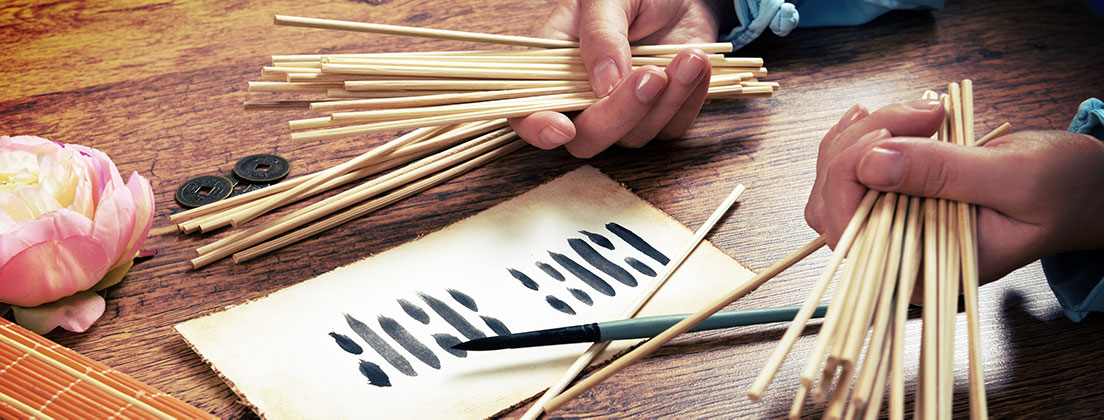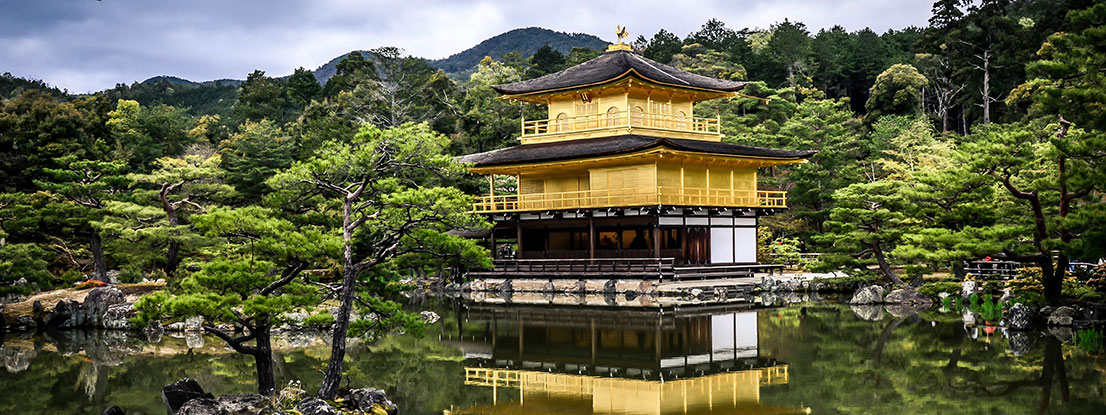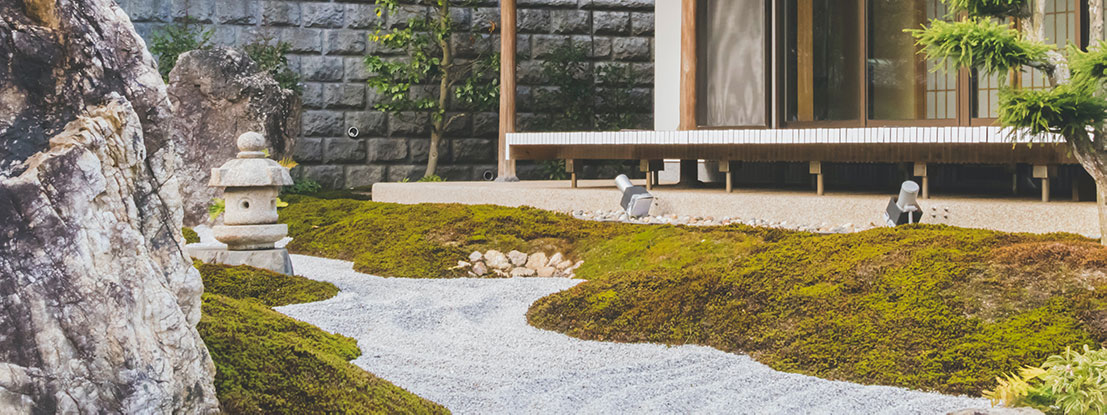The name Zen simply means meditation, or dhyana. Zen meditation or Zen Buddhism are very popular all over the world today. Many people seek in the quiet meditation and the ceremonies of Zen a balance to the demanding everyday life.
Behind Zen, traditionally spread especially in China and Japan, hides a fascinating and strange way of living. A complete focus on the here and now, on the power of intuitive decisions and actions. Classical sitting meditation is only one part of a philosophy of life that encompasses all aspects of everyday life. [1]

The primordial of Zen – The Legend of Bodhidharma
Around the year 480 AD, according to legend, the monk Bodhidharma set out on a journey from his native India to China. He is usually depicted as a grim-faced fellow with a full beard and a piercing gaze, in which, however, the expression of a slight wink can always be seen. In a Chinese monastery he developed the basic philosophy of Zen Buddhism together with the monks there.
Bodhidharma confuses the emperor
A somewhat strange conversation between Bodhidharma and the emperor Liang Wu Di has been passed down. The emperor asked Bodhidharma how he had advanced the practice of Buddhism and what merits he could expect in the next life. According to the traditional Buddhist view, good deeds lead in a cycle of rebirth to better and better lives and finally to Nirvana, the salvation from all earthly suffering, the all-encompassing nothingness.
Bodhidharma replied in his brusque manner, “No merit at all.” Surprised, the emperor inquired, “What is the first principle of the sacred teaching?” “It is simply empty, nothing is sacred.” Completely flummoxed, Liang Wu finally asked, “Then who are you to stand here before us?” “I don’t know,” Bodhidharma replied.

Bodhidharma helps the monk Hui-k’o to enlightenment.
After this conversation, Bodhidharma is said to have retired to a monastery for nine years to stare at the wall in a cave. He remained there until one day the monk Hui-k’o (Shenkuang) sought him out to ask him questions. Bodhidharma, however, paid no attention to him and so Hui-k’o waited in meditation outside the cave for a long time. In desperation, he finally cut off one of his legs and presented it to Bodhidharma as a sign of his sincerity.
Finally he was allowed to make his request. “I have no peace of mind. Please pacify my mind.” “Bring your mind here before me,” Bodhidharma replied. “I pacify it.” Hui-k’o replied, “But when I seek my own spirit, I do not find it.” “There!” exclaimed Bodhidharma. “I have pacified him.” At that moment, Hui-k’o had his enlightenment (satori). [2]

The philosophy of zen
The tales of Bodhidharma give a first insight into the views of Zen. In Zen Buddhism, traditional Buddhist elements combine with the philosophy of the ancient religious and philosophical traditions of Confucianism and Taoism.
The influence of Confucianism
From Confucianism, for example, Zen takes the practical and humanistic approach. Often Zen monks work to feed the residents of their monastery, while classical Buddhist monks live off donations from the population. Work is as much a part of Zen as sitting meditation (zazen). [3]
The Tao and the influences of Taoism
From Taoist philosophy comes the idea of Tao as the primordial ground of all being. It is boundless and timeless, empty and yet intuitively brings forth the world from itself. Like a plant that grows from a seed.
If you want to learn more about the Tao and Taoism, you can find all the information in our knowledge article: Taoism – the philosophy of spontaneity.

Intuition in Zen
The followers of Zen Buddhism have adopted the central values of Taoism naturalness and intuition as supreme principles. Enlightenment, which in other Buddhist teachings comes at the end of a long meditative path, in Zen is usually a spontaneous event, as we have seen in the story of Hui-k’o. It arises from the spontaneity of a situation in which a person detaches himself from all earthly goals, from all intention, and from all tension, and thus becomes one with the Tao. [4]
Zen Enlightenment – Experiencing the Tao
The Zen master Sokei-an Sasaki (1882 -1945) described the moment of his enlightenment and his experiences with the Tao as follows:
“One day I wiped all ideas from my mind. I gave up all desire. I discarded all words with which I thought and remained in silence. I felt a little strange – as if I were being carried into something, or as if I were touching a power I didn’t know … And Ztt! I entered.
I lost the limitation of my physical body. I had my skin, of course, but I felt that I was in the center of the cosmos. I spoke, but my words had lost their meaning. I saw people coming towards me, but all of them were the same person. All of them were myself! I had never known this world. I had believed that I was created, but now I must change my mind: I was never created; I was the cosmos; there was no individual Mr. Sasaki.” [5]

The Self in the Flow of the Tao
In our Western world, we perceive ourselves, our body and mind, as separate from the world. We are the subject interacting with objects and experiencing joy and suffering. As experiencers, we are separate from our experiences. We try to wring as many positive experiences from the world as possible. And once we have a successful experience, we immediately chase after the next one.
In Zen, on the other hand, we are a part of the Tao. The duality between subject and object is dissolved. Likewise the duality between good and evil, between joy and suffering. For opposites are interdependent, closely related, and not necessarily mutually exclusive. They are like the two sides of a coin. As experiencers, we are not separate from our experiences. There is no self except those things of which we are aware. We do not sweat because it is hot. The sweating is the heat. [6]

Samsara, the cycle of life
So why should we run after the positive experiences. We would behave like fleas on a hot stove. If they jump, they fall again the next moment, only to have to jump again. This is samsara, the eternal cycle of life, of birth, death and suffering, from which all Buddhists try to break out. This can only be achieved through enlightenment or awakening. Enlightened followers of Buddhism reach Nirvana, which could also be called the great void. [7]
However, Zen differs from other Buddhist currents in that enlightenment is not at the end of countless lives or the result of decades of study and meditative practice. But, as we have already seen, a spontaneous event out of the situation.

Freedom through intuition and spontaneity
Thus, the followers of Zen do not try to fight the world as an individual. Freedom, according to Zen philosophy, can only be achieved by letting our mind rest in the moment, giving up control and trusting completely in our actions and intuition. Let’s look at our breathing as an example. We can try to consciously control every single breath. However, it works best if we simply leave our breaths to our bodies. If we change our point of view, instead of I breathe, we could equally say It breathes me. [8]
So the Zen Buddhist tries to put aside all constraints, any aim, any tension, to empty his mind and thus make intuition possible. Only in this way is freedom in the moment possible for him as part of the Tao. Meditation can serve as an aid. However, it is not absolutely necessary. We can also find the freedom of Zen in everyday tasks, as long as we just let them flow out of us spontaneously. The monk Yúnmén Wényan described the practice of Zen as follows: “When you walk, just walk. When you sit, just sit. And above all, do not sway.” When Yúnmén was asked about the Tao, he simply replied, “Keep walking.” [9]
The teaching methods of Zen masters

But how does a Zen master teach natural spontaneity to his students? Because one thing is certain. If you try to empty your mind and be spontaneous, you will surely fail. In many stories of Zen, characteristic conversations between master and student have been handed down. To concrete questions, the teachers usually answer enigmatically. Rather, they try to put as many obstacles as possible in the way of their students.
For example, the Japanese Zen master Takuan writes, “When a monk asks, “What is the Buddha?” the master may raise his fist; when asked, “What is the ultimate idea of Buddhism?” he usually exclaims, even before the questioner has finished his sentence, “A flowering plum branch” or “The cypress tree in the courtyard.”
So the masters just let the answers flow out of themselves spontaneously. Without thinking about the question or formulating a differentiated answer. For the essence of the Tao is natural spontaneity. [10]
Meditation in Zen

As institutions many centuries old, Zen schools and monasteries, despite the intuitive nature of Zen, have developed many rituals and procedures that make their operation possible. In modern Zen communities such as Soto and Rinzei, meditative sitting (zazen) is given particularly high priority.
Why meditate?
One could certainly ask why so many strong individuals spend a large part of their lives sitting down. But turbid water also clears best when left alone. And so the spirits of the monks can also lay aside agitation and clear their consciousness. For action without clear consciousness is not meaningful. The core idea of Zen is to see the world as it is. The monks try to follow this path in meditation. They sit and observe without pursuing any meaning. [11]
Meditation in a Zen Monastery
In the monastery, sitting meditation takes place in the meditation hall, a long room with wide platforms on both sides. The monks sit here in rows of two facing each other. Two guards walk unceasingly along the rows. If a monk falls asleep or adopts a wrong posture, they bow solemnly and strike him on the shoulders with a stick, the keisaku. However, the blow with the stick is not a punishment. Rather, it is perceived as an invigorating massage.
At regular intervals, the monks interrupt their meditation. In a quick march, they walk through the hall on the floor between the two platforms. In this way they avoid sluggishness and fatigue.

The correct meditation posture
Great importance is attached to the physical posture in meditation in Zen monasteries. The monks sit in the lotus position, that is, with their legs crossed and the soles of their feet on their thighs, on padded cushions. Their posture is upright but not stiffened. Their eyes are open and their gaze is fixed on a point a few metres in front of them on the floor.
Proper breathing
Special attention is paid to breathing. The meditator should breathe slowly and without strain into the belly. This shifts the body’s centre of gravity into the belly, which gives the posture a feeling of firmness and connectedness with the ground. [12]
Zen Exercise for Beginners
Zen beginners are advised to first familiarise themselves with silence and doing nothing. They should concentrate only on their own breathing and count to ten again and again. They do this exercise until meditation and breathing eventually work effortlessly and naturally on their own. Just sit down and try it out! You can find more helpful tips and explanations in our knowledge article 4 Breathing Techniques for Relaxation.
Art in Zen

Many Zen monks are artistically active. Unlike the art of other religions, the art of Zen contains little symbolism. The objects of its representation are mostly concrete objects. Particularly well known, for example, are the typical Zen gardens, with flowing design elements, or the Zen artists’ sweeping ink drawings.
The dynamism of the artworks is no coincidence. They also flow from the natural spontaneity of Zen artists. They are not only to be understood as images of nature, but as a piece of nature themselves. At the same time, the artistic forms of Zen are not a pure product of chance. Zen sees no contradiction in the combination of spontaneity and control. [13] One of the main principles of Zen art is that haste and all its concomitants never lead to good results, because they prevent us from perceiving the world with all our senses. [14]
What can we take from Zen?
Zen is a philosophy of life that cultivates the area of our lives that is beyond our control. Any compulsive attempt to empty one’s mind and embark on the path of Zen will fail. Becoming a true Zen master is certainly difficult with our Western way of life.
But we can orient ourselves to some core statements of Zen. For example, by trying not to overthink everything a thousand times and not to overburden ourselves with constant control and goals that only lead to the moment rushing past us unnoticed. If we perceive the moment as an important part of our life and do not always think in terms of the future or the past, then we have already taken the path of Zen.
Sources:
1) Alan Watts: The Way of Zen, 1957, Kindle-Edition, Seite 77.
2) Alan Watts: The Way of Zen, 1957, Kindle-Edition, Seite 86.
3) Alan Watts: The Way of Zen, 1957, Kindle-Edition, Seite 29.
4) Alan Watts: The Way of Zen, 1957, Kindle-Edition, Seite 88.
5) Zitat, Alan Watts: The Way of Zen, 1957, Kindle-Edition, Seite 121.
6) Alan Watts: The Way of Zen, 1957, Kindle-Edition, Seite 118.
7) Alan Watts: The Way of Zen, 1957, Kindle-Edition, Seite 137.
8) Alan Watts: The Way of Zen, 1957, Kindle-Edition, Seite 115.
9) Alan Watts: The Way of Zen, 1957, Kindle-Edition, Seite 140.
10) Alan Watts: The Way of Zen, 1957, Kindle-Edition, Seite 139.
11) Alan Watts: The Way of Zen, 1957, Kindle-Edition, Seite 154 f.
12) Alan Watts: The Way of Zen, 1957, Kindle-Edition, Seite 156 f.
13) Alan Watts: Zen-Buddhismus: Tradition und lebendige Gegenwart, 1957, Seite 214.
14) Alan Watts: Zen-Buddhismus: Tradition und lebendige Gegenwart, 1957, Seite 216.




